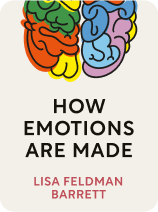

This article is an excerpt from the Shortform book guide to "How Emotions Are Made" by Lisa Feldman Barrett. Shortform has the world's best summaries and analyses of books you should be reading.
Like this article? Sign up for a free trial here.
What are universal emotions in psychology? Do universal emotions even exist? Which emotions are universal?
In her book, How Emotions Are Made, neuroscientist and psychologist Lisa Feldman Barrett examined past psychological experiments to create a new theory of emotions in psychology. According to Barrett’s findings, universal emotions don’t exist as many psychologists previously believed.
Keep reading to find out why Barrett says universal emotions are a myth, according to psychology.
Psychology: Emotions Aren’t Universal Across Cultures
Myth: People all over the world recognize and share the same emotions.
Reality: According to Barrett, the experiments on which this idea is based were flawed. In fact, different cultures have different emotions, as expressed through unique words describing emotion concepts that do not exist in other cultures.
Flawed Experiments Concluded That Emotions Are Universal
Barrett points out that there are thousands of studies claiming that emotions are universal in psychology, and popular media reinforces the idea that not only do specific facial expressions correspond with specific emotions, but those emotions are recognizable by people in vastly different cultures all over the world. Everyone recognizes that a frown means sadness, these studies say, and because we all recognize it, we also experience and share the same concept of sadness across the globe.
(Shortform note: Charles Darwin’s 1872 book, The Expression of the Emotions in Man and Animals, is one of the first written texts to put forth the theory of universal expressions, and proponents of the belief still cite it today, despite evidence to the contrary.)
Barrett contends, however, that the experiments on which this idea is based overstated their conclusions. When she and her colleagues conducted unbiased experiments, they found that people in non-Western societies were frequently unable to recognize Western concepts of emotion.
In one of the early experiments that determined emotions are universal in psychology, researchers showed subjects photos of actors’ faces depicting what were supposed to be various emotions. The subjects were given a set of emotion words to choose from, and they had to circle the word that best described the facial expression. Test subjects from all over the world chose the “right” answer 85% of the time.
However, when researchers conducted the same experiments but removed the lists of emotion words and asked subjects to freely label the photos, subjects matched the emotion to the facial expression only 58% of the time or lower. Barrett indicates that this is because the multiple choice question in the early experiments had been operating as a sort of cheat sheet, priming the subjects to see certain emotions and not others.
(Shortform note: One of the authors of the original facial expression studies, Paul Ekman, has refined his theories somewhat over the intervening decades to recognize that emotions are both universal and, as Barrett argues, culture-specific. Nonetheless, he continues to take the position that there are seven universal emotions: anger, contempt, disgust, happiness, fear, sadness, and surprise.)
Psychology’s Exception to the Universal Emotions Rule
Barrett concedes that there may be one exception to the rule that emotions are not universal: happiness. Regardless of what experimental method is used, people in many different cultures agree that smiling and laughing mean happiness.
(Shortform note: While experiencing happiness may be considered a universal emotion, research in psychology suggests that the traditional definition of what happiness is may be inaccurate. It’s commonly believed that happier people experience more pleasant emotions and fewer unpleasant ones. Recent research contradicts this, showing that across cultures, happier people are those who more often experience the emotions they want to experience, regardless of whether these emotions are pleasant (love) or unpleasant (hatred).)

———End of Preview———
Like what you just read? Read the rest of the world's best book summary and analysis of Lisa Feldman Barrett's "How Emotions Are Made" at Shortform.
Here's what you'll find in our full How Emotions Are Made summary:
- A deep dive into what emotions really are and where they come from
- How some cultures have different emotions than others
- The difference between feelings and emotions






